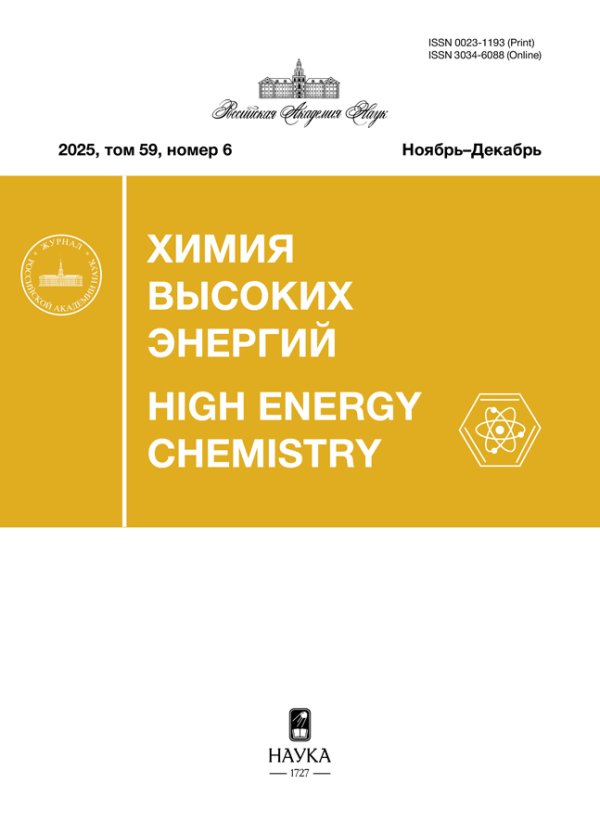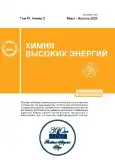Influence of High γ-Radiation Doses on the Germination and Toxic Properties of Oat Seeds
- Authors: Allayarov S.R.1, Allayarova U.Y.1, Klimanova E.N.1, Demidov S.V.1, Sashenkova T.E.1, Blokhina S.V.1, Mishchenko D.V.1,2
-
Affiliations:
- Institute of Problems of Chemical Physics, Russian Academy of Sciences
- Research and Education Center in Chernogolovka, Moscow State Regional University
- Issue: Vol 57, No 2 (2023)
- Pages: 125-131
- Section: RADIATION CHEMISTRY
- URL: https://journals.rcsi.science/0023-1193/article/view/139984
- DOI: https://doi.org/10.31857/S002311932302002X
- EDN: https://elibrary.ru/NGKZOM
- ID: 139984
Cite item
Full Text
Abstract
The effect of γ-radiation doses from 100 to 3000 kGy on the toxic properties and germination of oat seeds has been + studied. A tendency has been noted for a 15–25% decrease in the germination of oat seeds under laboratory conditions in the range of presowing irradiation doses of 10–700 Gy. After irradiation with a dose higher than 1 kGy, the seeds lost their ability to germinate. Curves reflecting the dependences of the length of oat stalk on the dose of presowing irradiation of seeds exhibited two areas with a characteristic separation point at doses of 70 Gy, below which the degree of influence of the irradiation dose on the height of
seedlings and their growth ability increased noticeably. The toxicity of radiolyzed oat grains depended on the dose of γ-irradiation of grains and the mode of additional feeding of experimental mice. It was established that a γ-radiation dose lower than 100 kGy did not affect the toxicity of fodder oat grain, and radiation doses of 400 kGy or higher made irradiated grains unsuitable for feeding mice without additional feeding with compound
feed. The higher the dose of γ-irradiation of oat grain, the earlier experimental mice died en masse: after 14–15, 9, 8, and 6 days of feeding at radiation doses of 580, 1000, 1700, and 3170 kGy, respectively. The reason for the toxic manifestation of irradiated oat grains and the death of mice treated with irradiated grain,apparently, can be the formation of toxic substances in oat grains irradiated with high doses due to the occurrence of physicochemical reactions in the course and after irradiation and a decrease in the nutritional value of products associated with the destruction of vitamins and other food components. Intoxication after consumption of oat grains irradiated with a dose of 400–3170 kGy was clinically manifested by depression, lethargy of animals, and signs of dehydration and diarrhea against the background of a strong decrease in the body weight of experimental animals. It is expedient to use radiolyzed oat grains for technical purposes, especially, if they were treated with high doses of radiation
About the authors
S. R. Allayarov
Institute of Problems of Chemical Physics, Russian Academy of Sciences
Email: sadush@icp.ac.ru
Chernogolovka, Moscow oblast, 142432 Russia
U. Yu. Allayarova
Institute of Problems of Chemical Physics, Russian Academy of Sciences
Email: sadush@icp.ac.ru
Chernogolovka, Moscow oblast, 142432 Russia
E. N. Klimanova
Institute of Problems of Chemical Physics, Russian Academy of Sciences
Email: sadush@icp.ac.ru
Chernogolovka, Moscow oblast, 142432 Russia
S. V. Demidov
Institute of Problems of Chemical Physics, Russian Academy of Sciences
Email: sadush@icp.ac.ru
Chernogolovka, Moscow oblast, 142432 Russia
T. E. Sashenkova
Institute of Problems of Chemical Physics, Russian Academy of Sciences
Email: sadush@icp.ac.ru
Chernogolovka, Moscow oblast, 142432 Russia
S, V. Blokhina
Institute of Problems of Chemical Physics, Russian Academy of Sciences
Email: sadush@icp.ac.ru
Chernogolovka, Moscow oblast, 142432 Russia
D. V. Mishchenko
Institute of Problems of Chemical Physics, Russian Academy of Sciences; Research and Education Center in Chernogolovka, Moscow State Regional University
Author for correspondence.
Email: sadush@icp.ac.ru
Chernogolovka, Moscow oblast, 142432 Russia; Mytishchi, 141014 Russia
References
- Козьмин Г.В., Санжарова Н.И., Кибина И.И., Павлов А.Н., Тихонов В.Н. // Достижения науки и техники АПК. 2015. Т. 29. № 5. С. 87.
- Diehl J.F. Safety of Irradiated Foods (Second Edition). Marcel Dekker, Inc., New York. 1995.
- Farkas J. Irradiation of Dry Food Ingredients. CRC Press, Inc., Boca Raton, Florida. 1988.
- Johnston D.E., Stevenson M.H. Food Irradiation and The Chemist. Royal Society of Chemistry Special Publication. 1990. Number 86.
- Чиж Т.В., Козьмин Г.В., Полякова Л.П., Мельникова Т.В. // Вестник Российской академии естественных наук. 2011. Т. 1. С. 44.
- Санжарова Н.И., Гераськин С.А., Алексахин Р.М., Козьмин Г.В., Лой Н.Н. // Вестник Российской академии естественных наук. 2013. Т. 1. С. 21.
- Bradshaw C., Kapustka L., Barnthouse L., Brown J. Ciffroy P., Forbes V., Geras’kin S., Kautsky U., Brechignac F. // J. Environ. Radioact. 2014. V. 136. P. 98.
- Алексахин Р.М., Гераськин С.А., Удалова А.А. // Вестник Российской академии наук. 2015. Т. 85. С. 373.
- Ульяненко Л.Н., Удалова А.А. // Радиация и риск (Бюллетень Национального радиационно-эпидемиологического регистра). 2015. Т. 24. С. 118.
- Brechignac F., Bradshaw C., Carroll S., Jaworska A., Kapustka L., Monte L., Oughton D. // Integr. Environ. Assess. Manag. 2011. V. 7. P. 411.
- Удалова А.А., Гераськин С.А., Дубынина М.А. // Радиационная биология. Радиоэкология. 2012. Т. 52. С. 517.
- Кирюхин Д.П., Кичигина Г.А., Аллаяров С.Р., Бадамшина Э.Р. // Химия высоких энергий. 2019. Т. 53. С. 224.
- Allayarov S.R., Rudneva T.N., Demidov S.V., Allayarova U.Yu., Klimanova E.N.// High. Energy. Chem. 2022. Vol. 56. № 6. P.429.
- Литвяк В.В., Батян А.Н., Кравченко В.А. // Журн. Белорус. гос. ун-та. Экология. 2018. С. 62.
- Коротченко К.А., Шарпатый В.А. // Химия высоких энергий. 1993. Т. 27. № 4. С. 50.
- Шарпатый В.А. Радиационная химия биополимеров. М.: Геос, 2008. 249 С.
- Шарпатый В.А. // Химия высоких энергий. 2003. Т. 37. С. 416.
Supplementary files
















